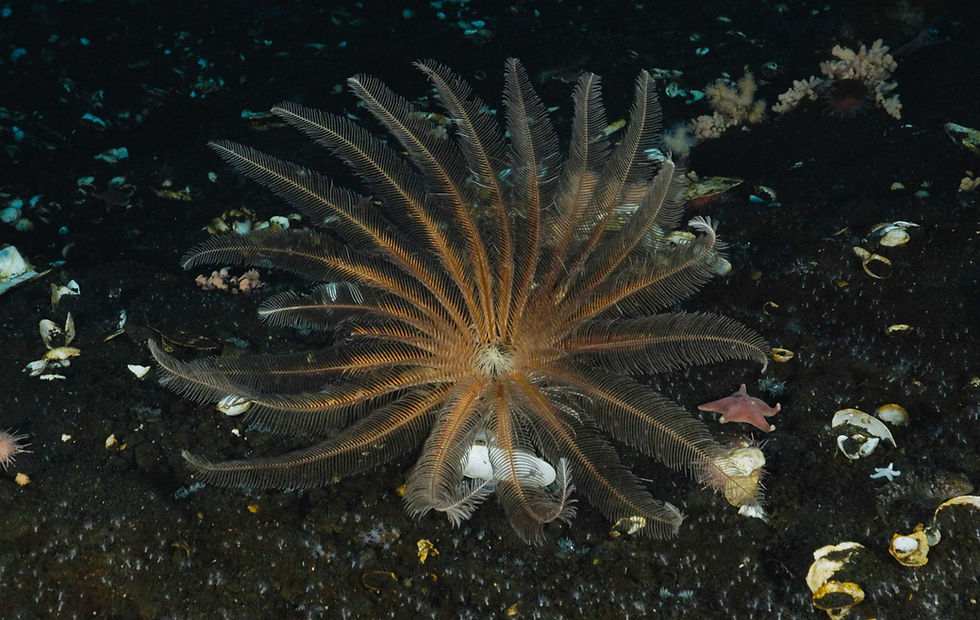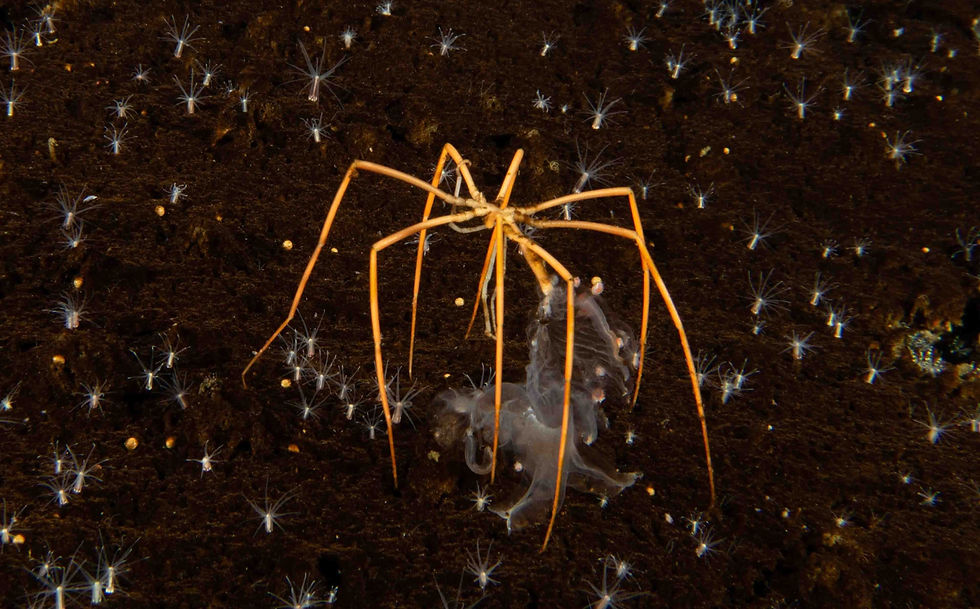A Taste of Antarctic Ice Tongues
- Rowan McLachlan
- Oct 25, 2023
- 3 min read
Sunday, Oct 15th: we finally departed Christchurch, en route to McMurdo Research Station, Antarctica.
The ~100+ passengers gathered at the United States Antarctica Program passenger terminal at 6 a.m. and enjoyed the purple sunrise as we waited to board.

We underwent the same check-in process as the day before (prior to boomeranging) and excitedly boarded the C17, this time with no delays or last-minute aircraft repairs!
The C17 Globemaster III measures 53 meters (174 feet) long with a wingspan of ~52 meters (170 feet)!

We found our seats and settled in for the 5-hour journey. This is what a window seat looks like on a C17 military plane:

The seats are quite basic and there is little space to stow carry-on luggage.
At 9 a.m. we took off! The take-off was incredibly loud and very bumpy compared to commercial airline flights. Luckily we are provided earplugs when we board!
Here is an approximate map of our flight path across the southern Ocean:

For the first 4 hours, there was little to see out the windows; just clouds and occasionally open ocean. Passengers walked around inside the plane to stretch their legs, but overall, it was a little cramped. As you can see on the left-side aisle, the queue for the single-stall bathroom was long for the entire flight! Speaking of bladders, that giant block above our heads is actually the internal center-wing fuel bladder.

About four hours into the flight, we finally started seeing the sea ice from the left side of the aircraft!

Immense expanses of frozen ocean stretching as far as the eye can see, perforated with deep blue cracks.

It is hard to gauge the scale from these photographs (taken through a tiny, dirty window) but the sea ice stretched on and on!

Sea ice is transient, undergoing a continual process of freezing, thawing, and then refreezing. The nature of cracks can change dramatically in less than 24 hours. In the photo below, you can see the texture of the ice, which indicates the location of previous cracks, which reconnected.

Staring at a frozen ocean is just mesmerizing!

Michael and I were glued to the windows for most of the flight! Michael is a high school teacher in Oregon who is joining our science expedition for outreach!

Selfie: Michael and Rowan
On the other (right) side of the C17, the views were entirely different. We were flying over northern Victoria Land and the start of the Transantarctic Mountain range. With a total length of about 3,500 km (2,000 mi), the Transantarctic Mountains are one of the longest mountain ranges on Earth.

The snow-covered peaks looked as though they were surrounded by seas of smoke!

Lines between the peaks revealed the locations of glaciers.

Ice from the East Antarctic Ice Sheet flows through the Transantarctic Mountains via a series of outlet glaciers into the Ross Sea, the Ross Ice Shelf, and the West Antarctic Ice Sheet.

The sheer scale of the mountains and glaciers was unbelievable!

Near the end of the journey, I decided to take a timelapse video, and coincidentally, I managed to capture footage of the Drygalski Ice Tongue!
An ice tongue forms when a glacier that is confined by a valley moves very rapidly out into a lake or (in this case) ocean, relative to other ice along the coastline. The ice tongue is actually a part of a glacier that is floating on the ocean.

Source: Wikipedia
When an ice tongue surges past adjacent coastal ice, the boundary experiences physical forces described as "shearing". Look for the sheared, zig-zag edge of the Drygalski ice tongue in the timelapse video below.
Here are some amazing facts about the Drygalski Ice Tongue:
It is the largest ice tongue in the world!
It reaches 70 kilometers (43 miles) out to sea from the David Glacier
It ranges from 14 to 24 kilometers (9 to 15 miles) wide
It is thought to be at least 4,000 years old
The David Glacier grounding line, where the ice leaves the shore and begins to float, is in a depth of ~1,900 m (6,200 ft)
In 2016 a 30 km (19 mi) long section of the ice shelf calved to form two large icebergs
Alas, our epic flight finally came to an end. We landed safely and began our journey to McMurdo Town!



Comments